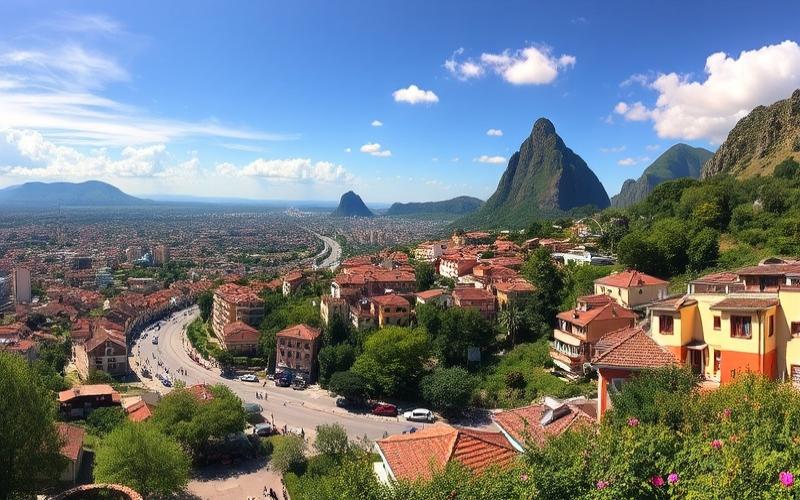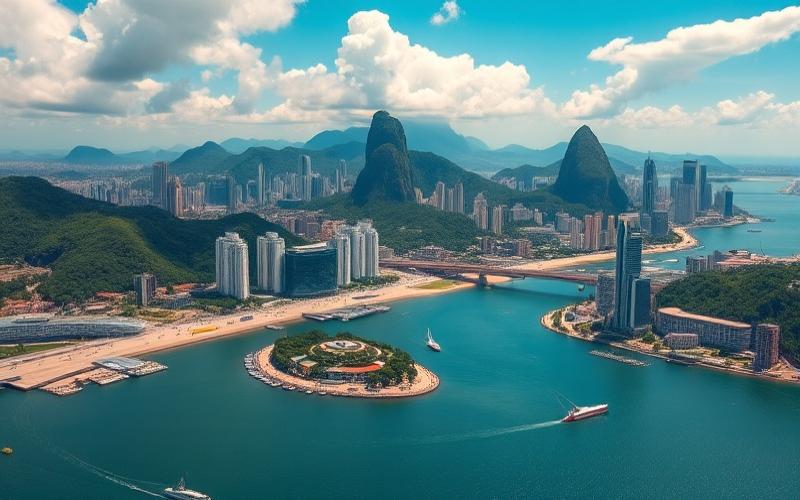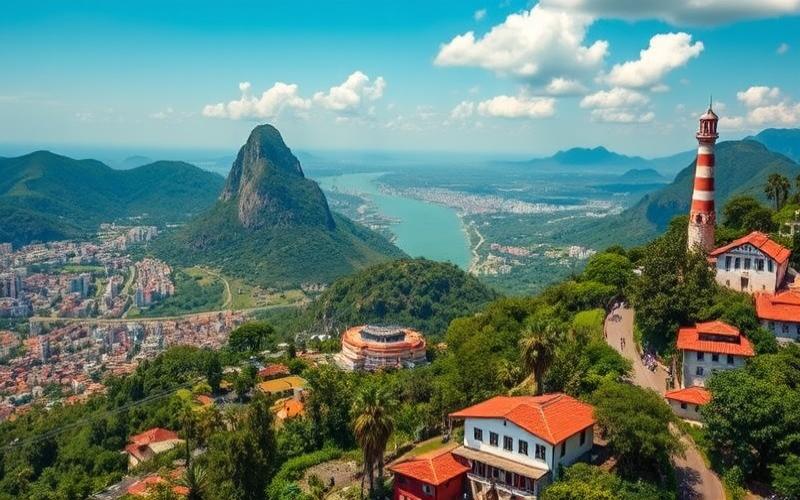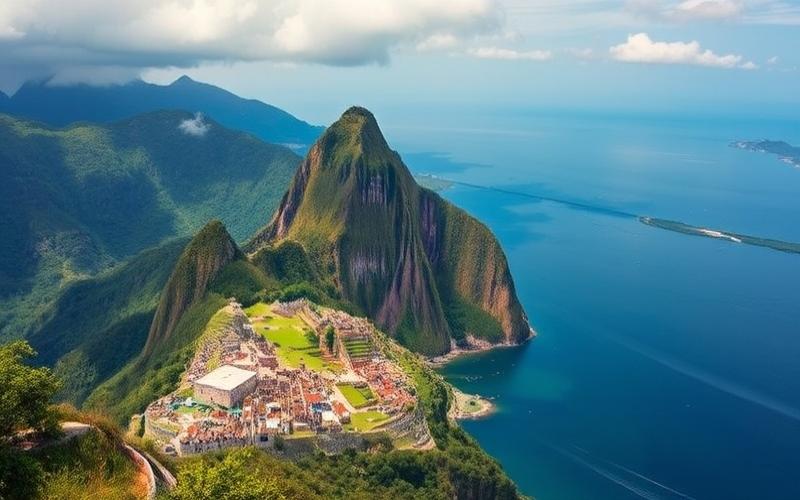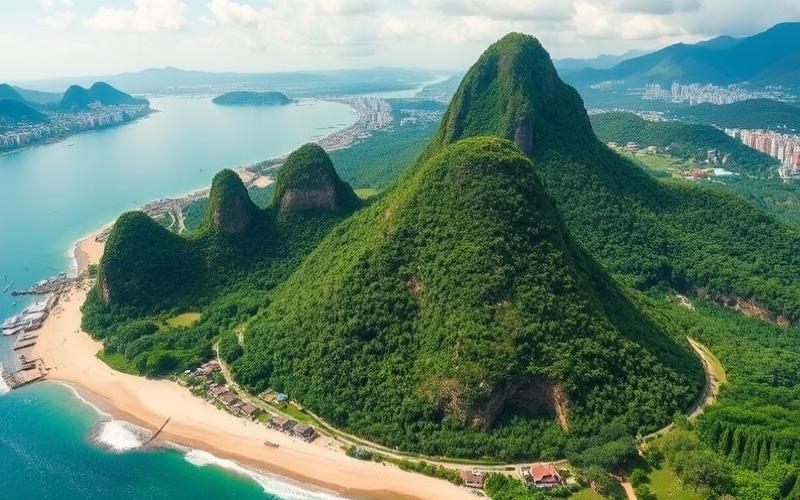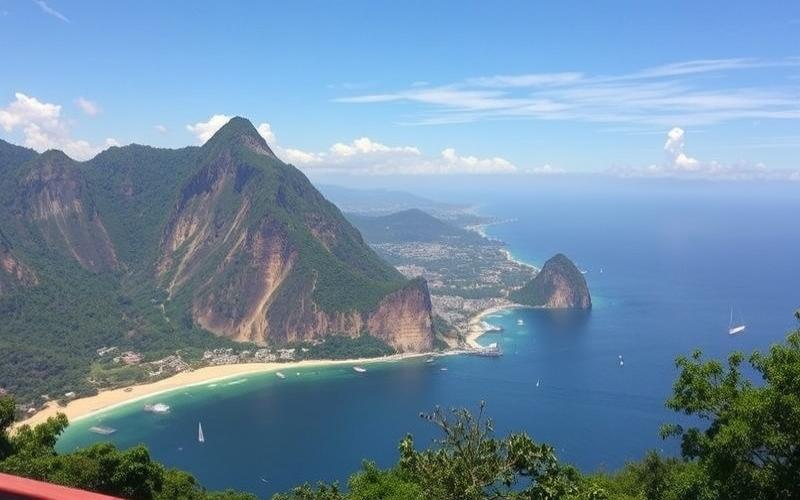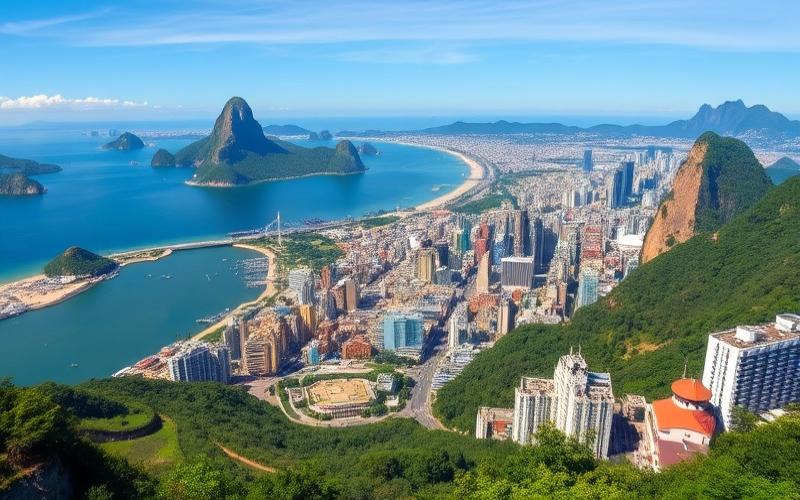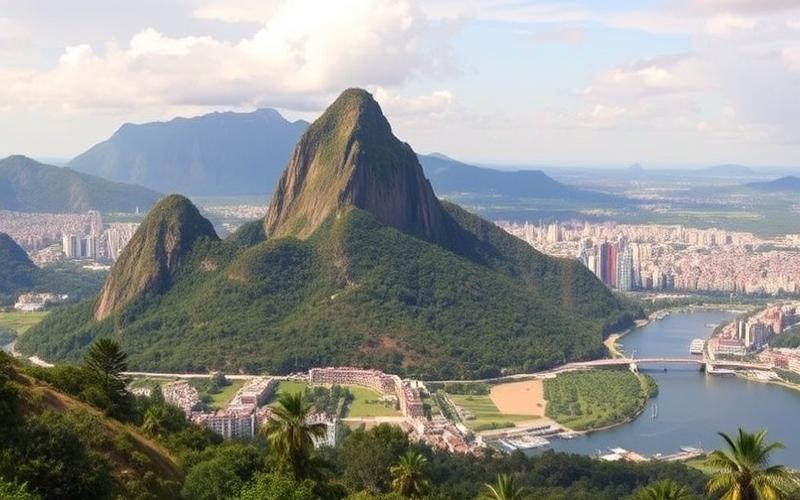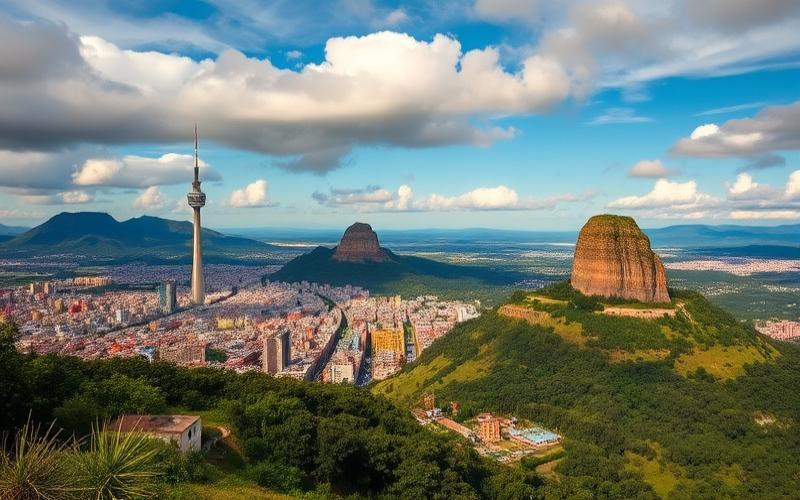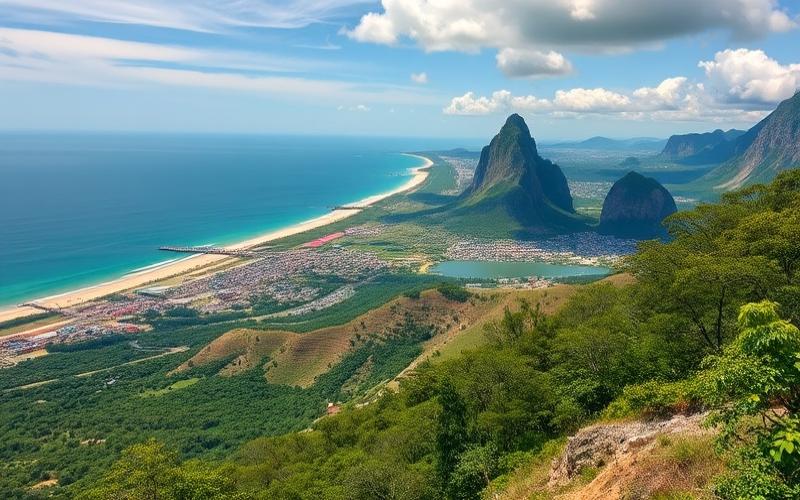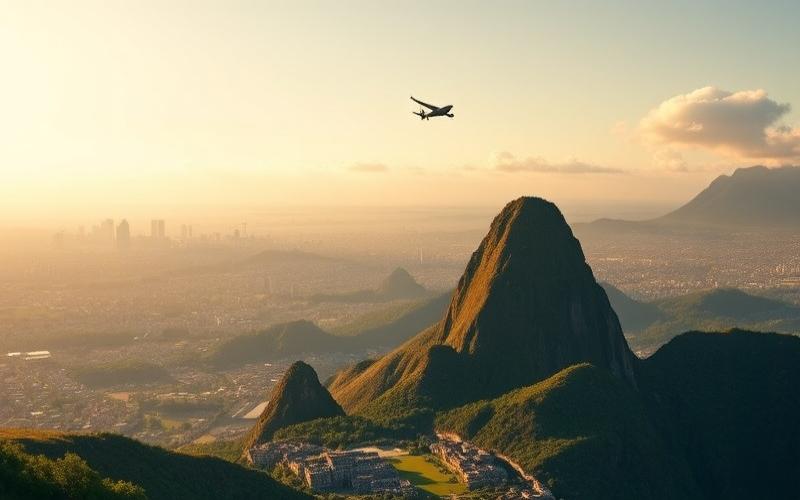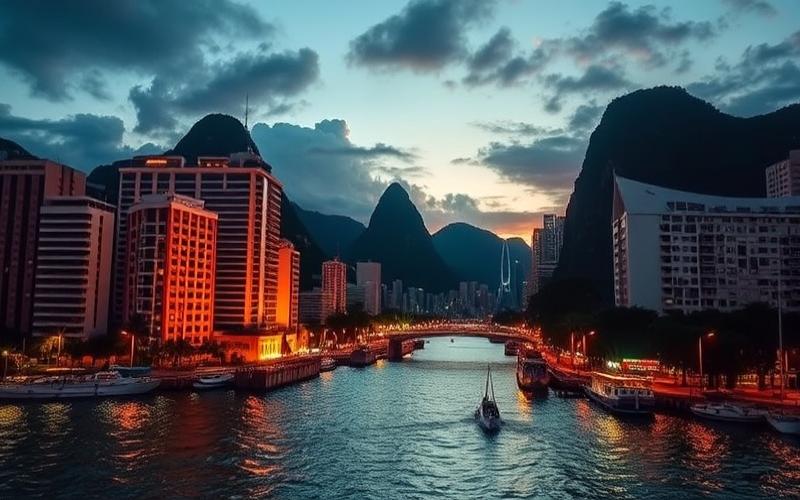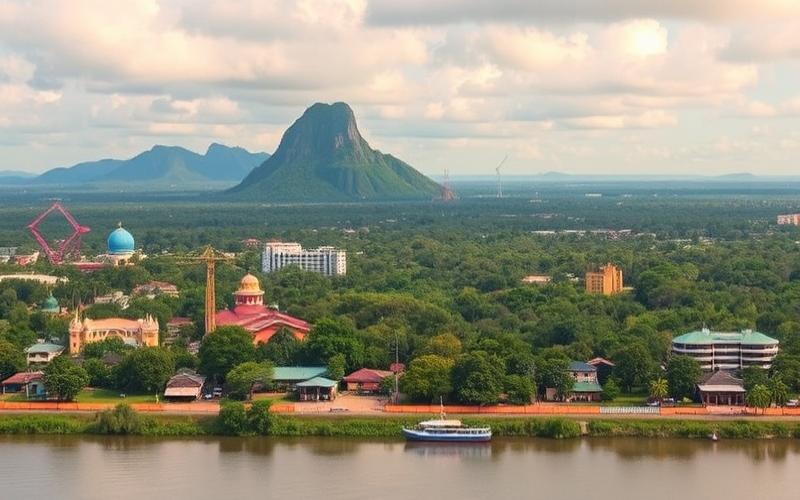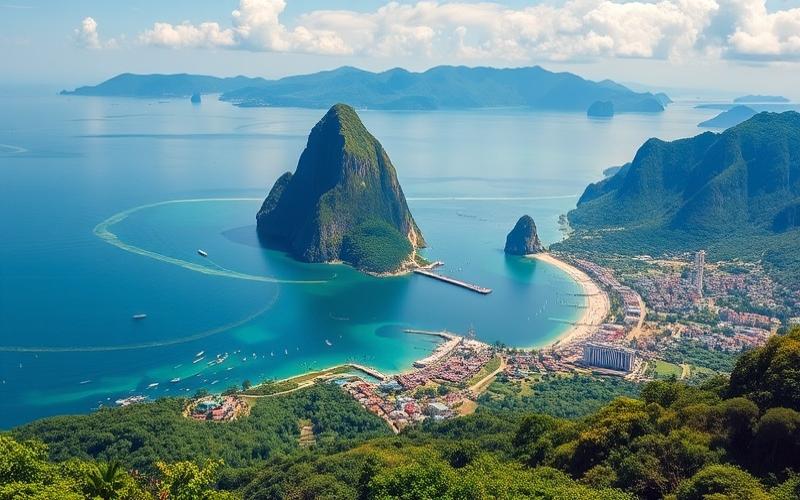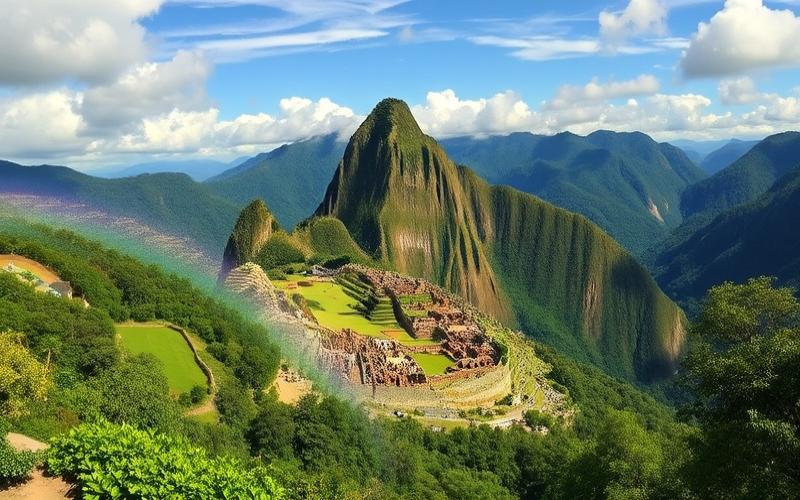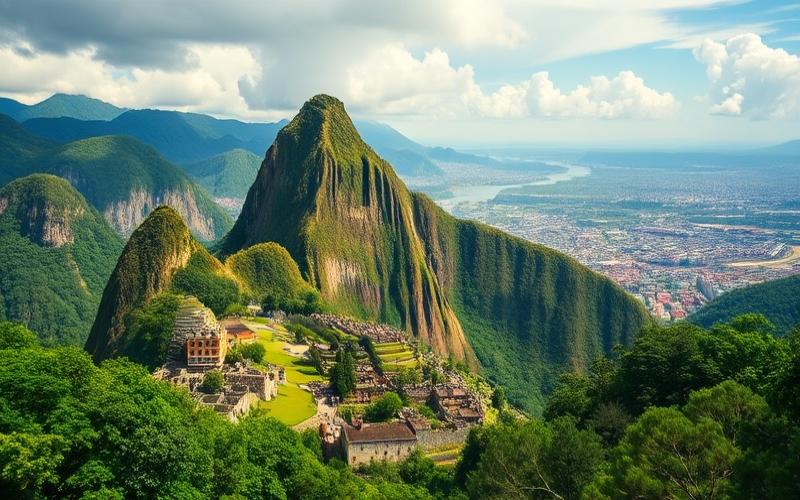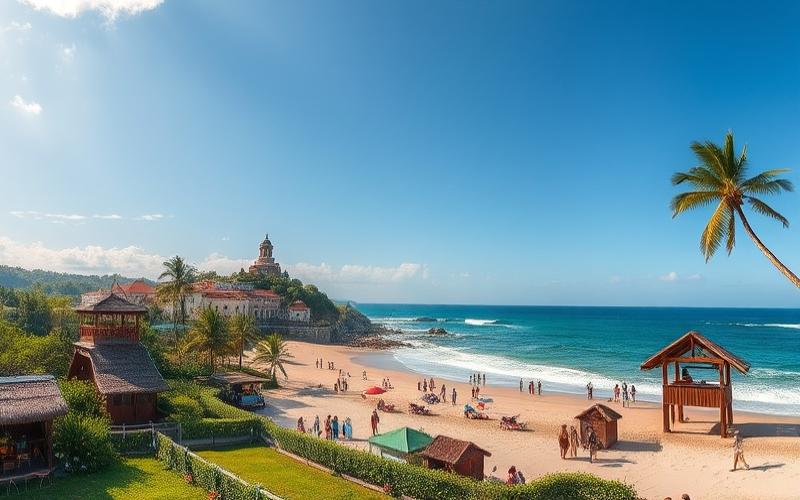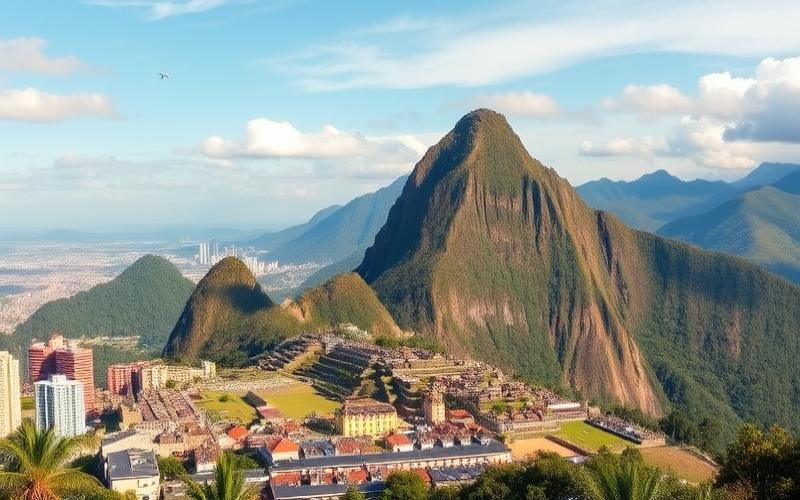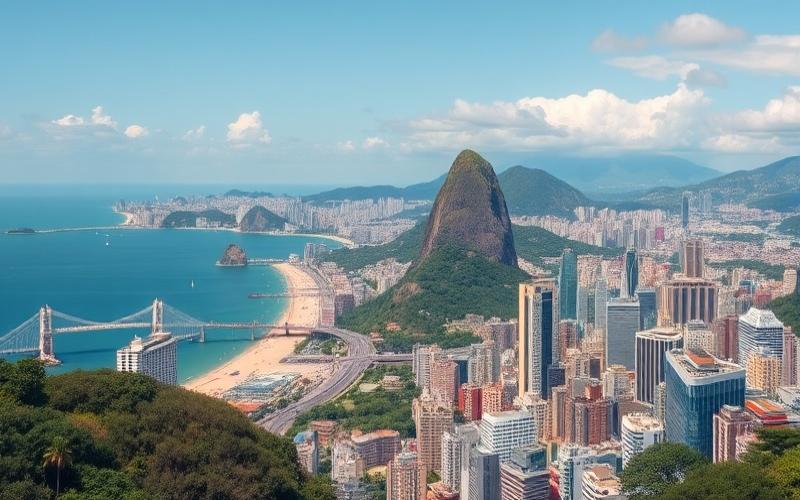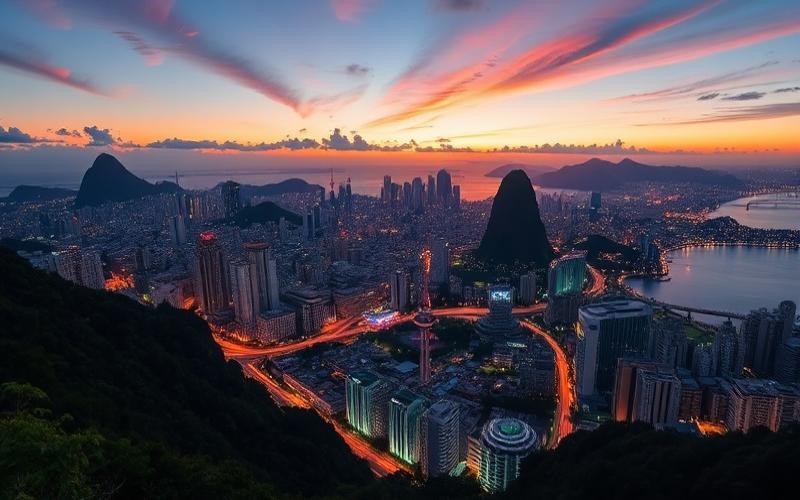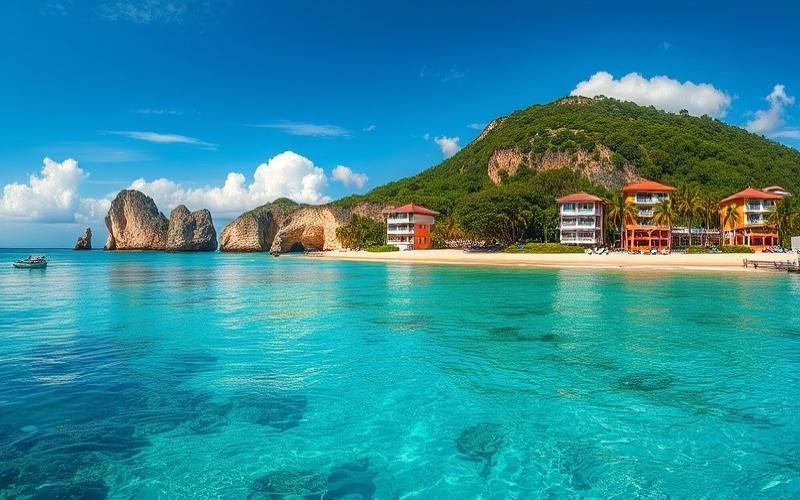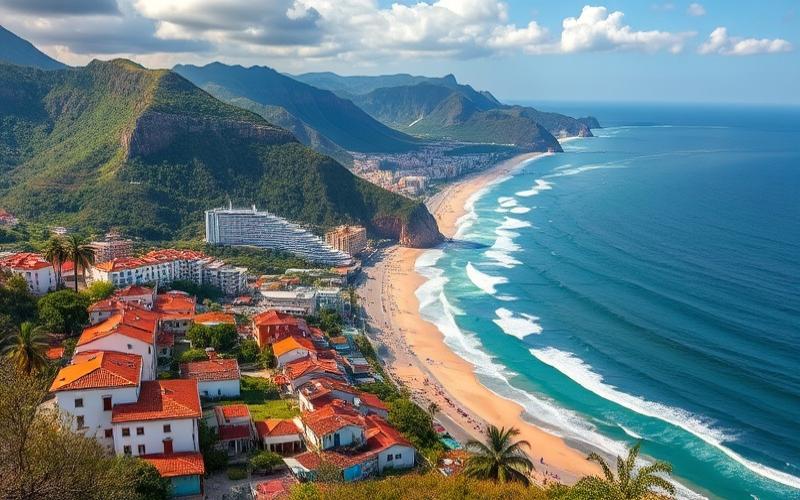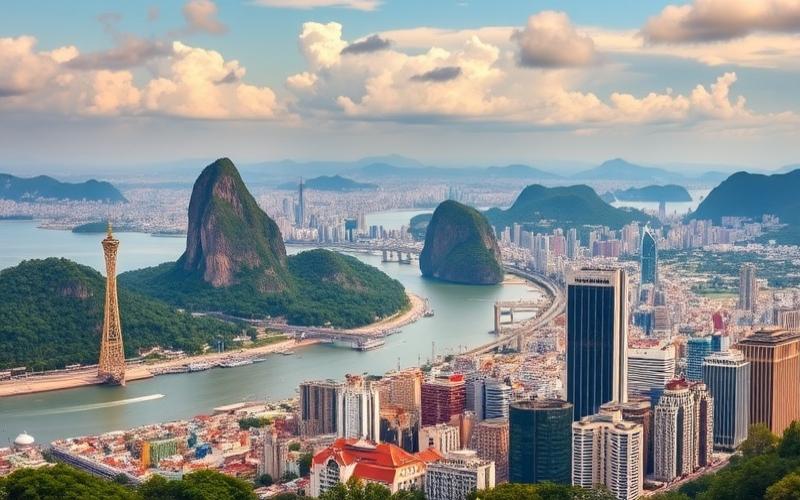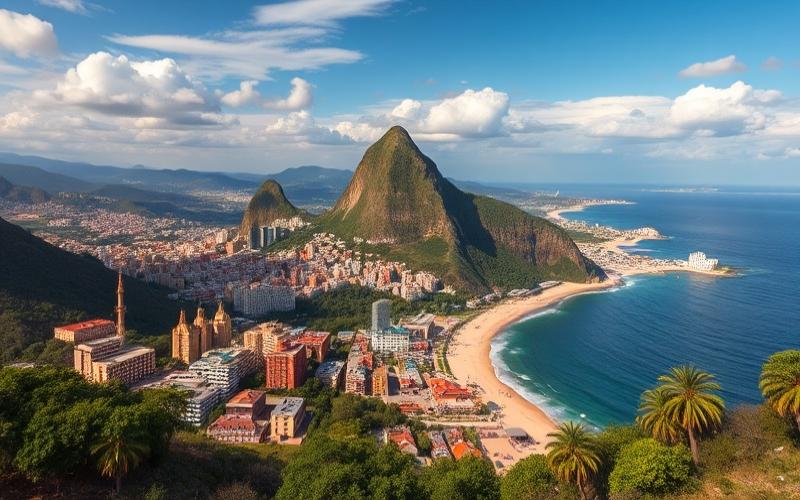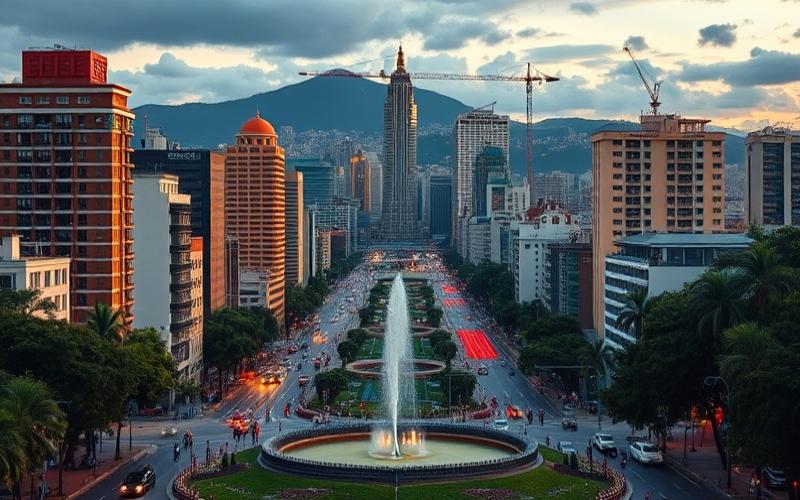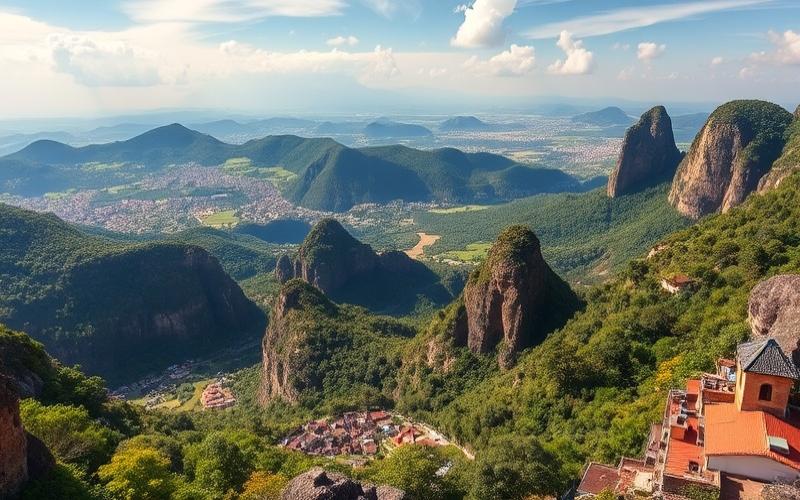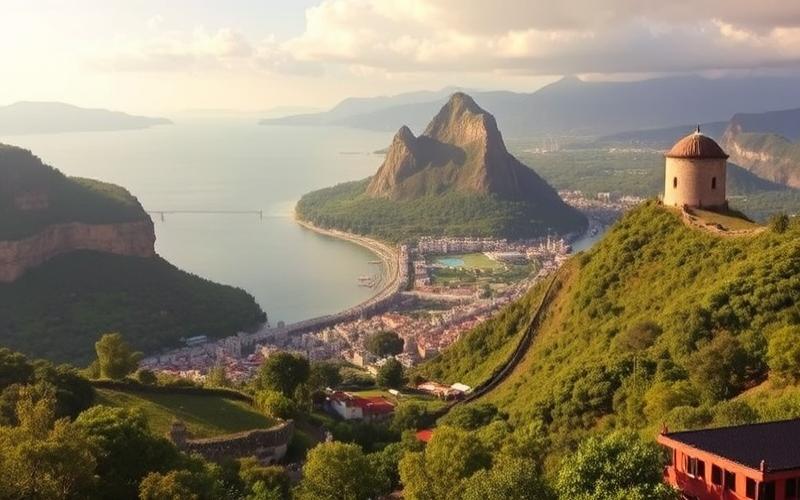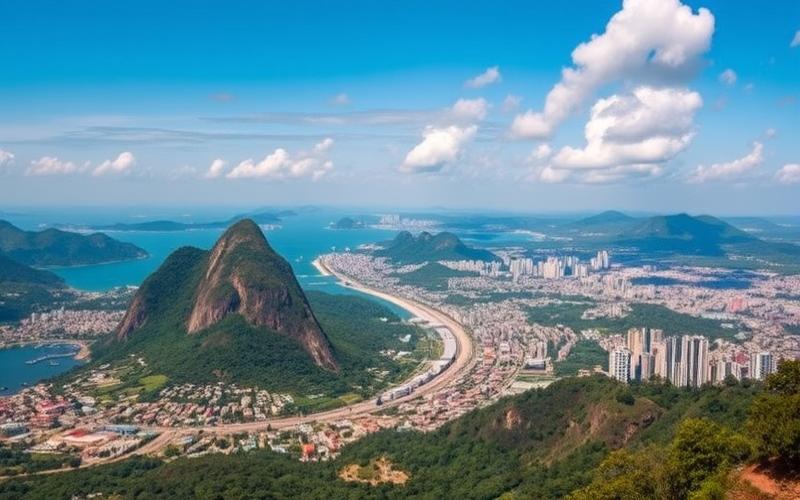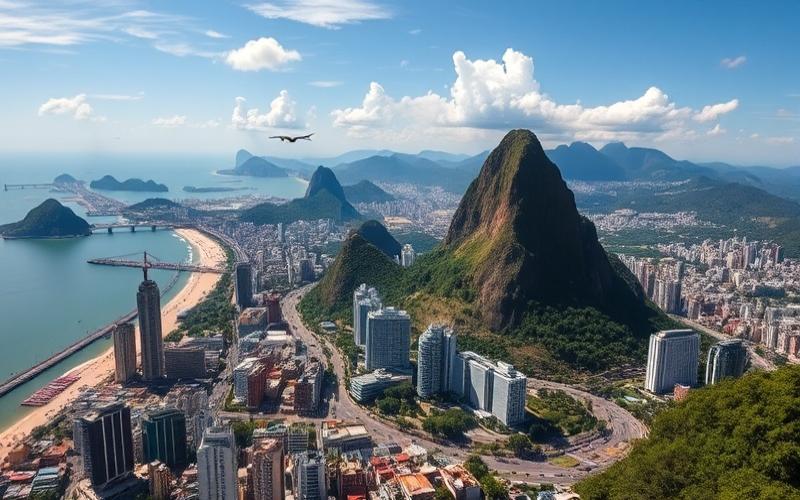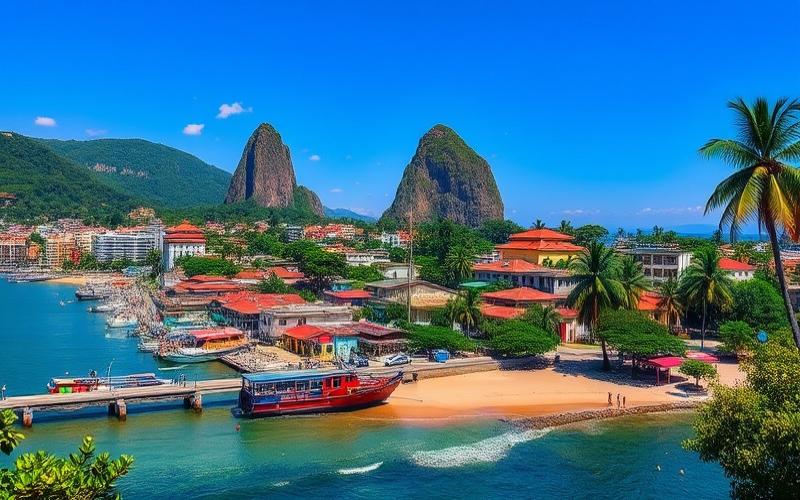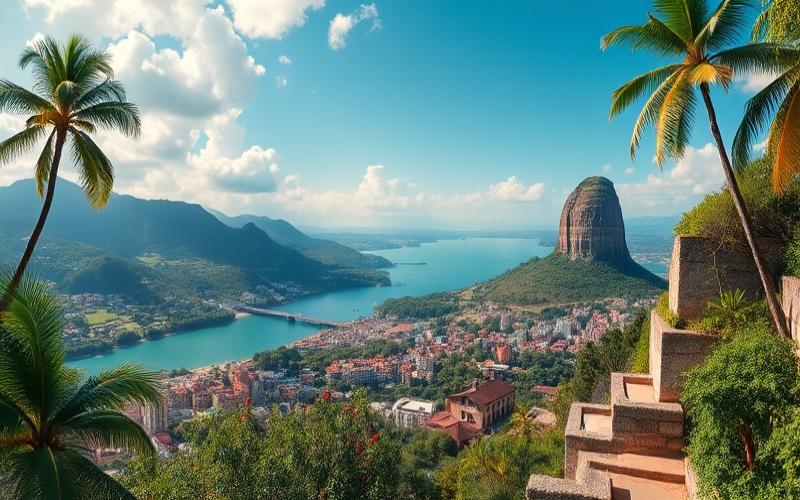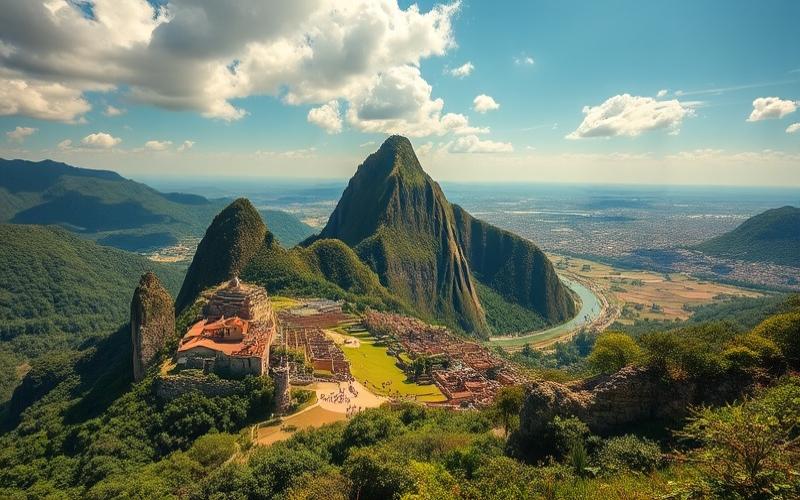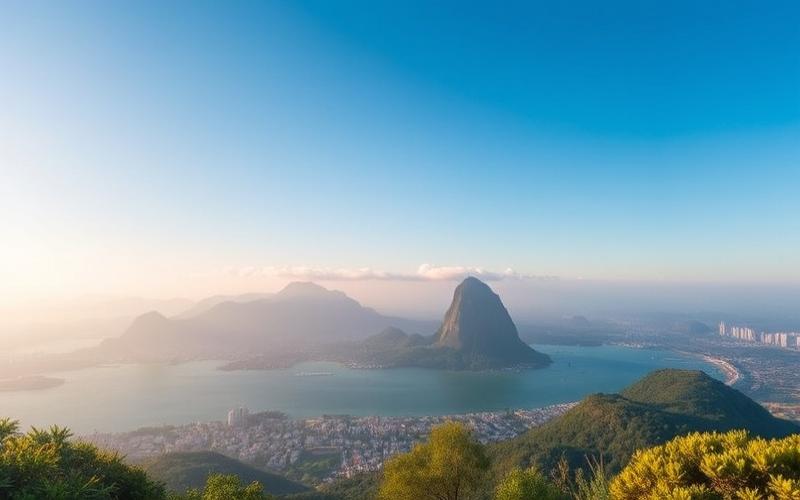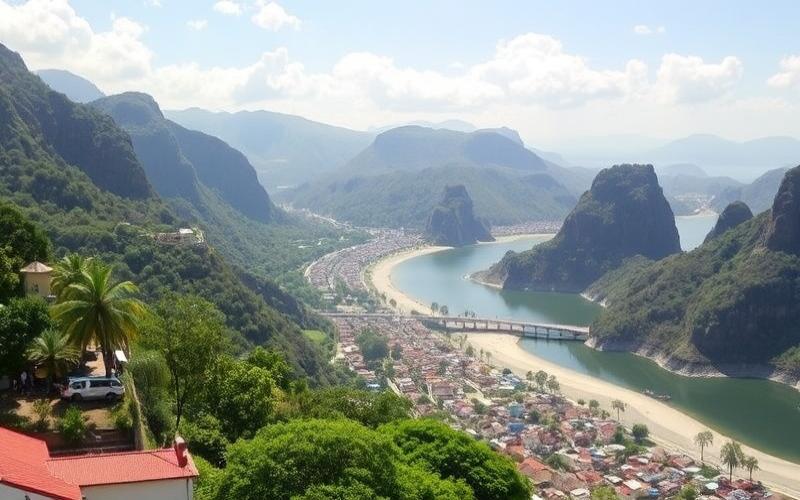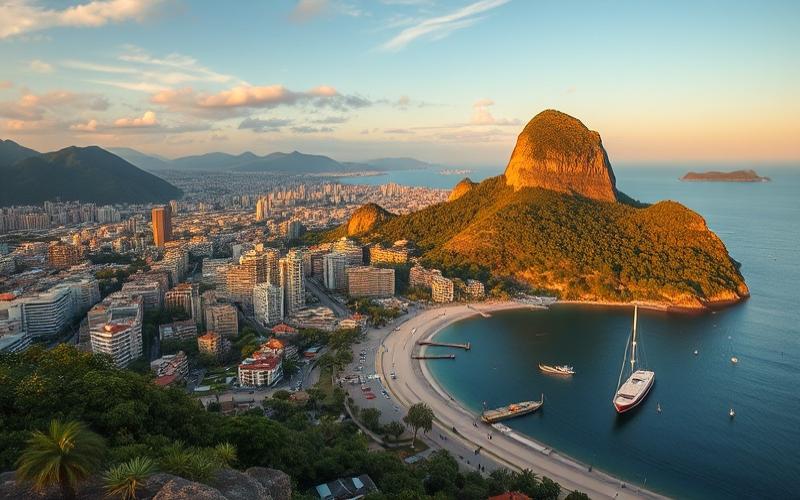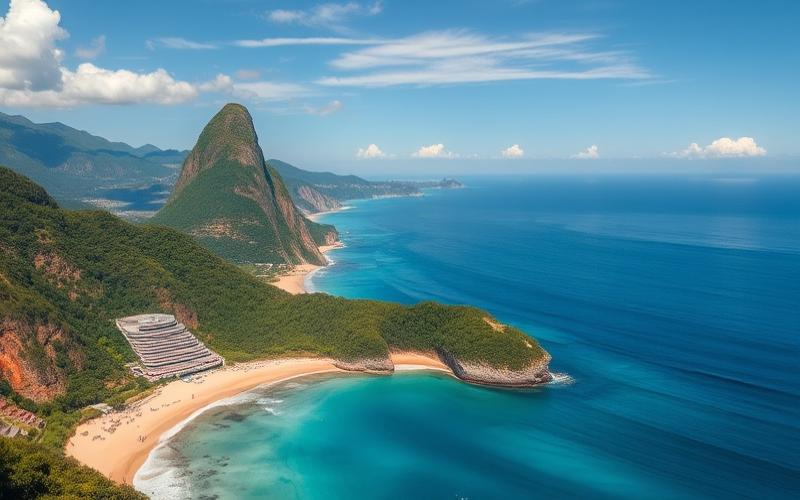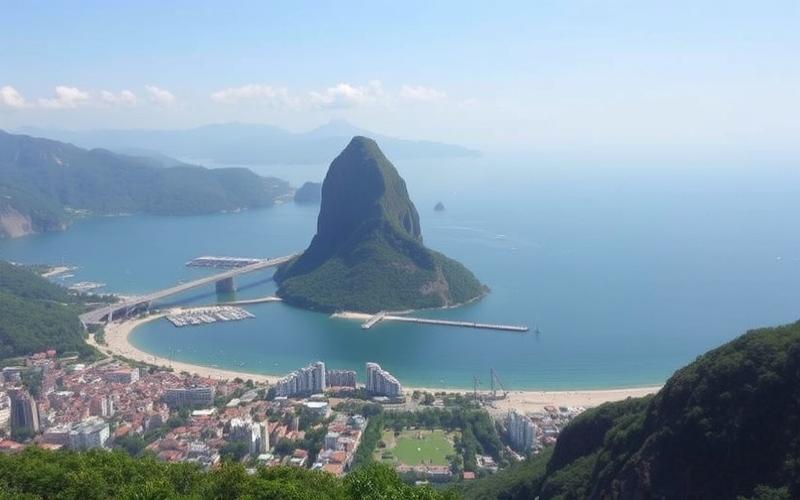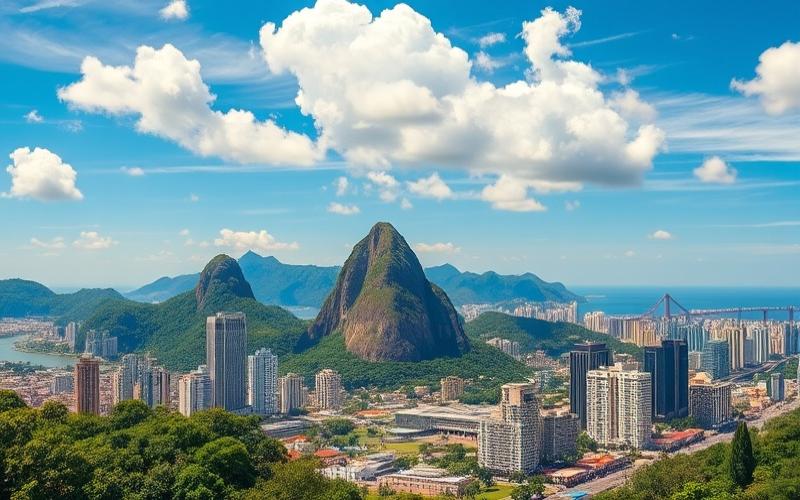
 Published on and written by Cyril Jarnias
Published on and written by Cyril Jarnias
As Brazil prepares to become one of the leading economies of the future, some of its cities are poised to experience a skyrocketing of prices by 2030. This phenomenon is explained by a combination of economic and demographic factors that are gradually transforming the urban landscape.
Investors, residents, and urban planners alike are wondering which cities will see the most pronounced price explosion, and most importantly, how this transformation will impact the local economy and the quality of life for residents.
This article examines the hidden reasons behind this price surge, identifying the key cities where demand is rapidly expanding, and why they represent opportunities not to be missed.
Promising Cities for Real Estate in Brazil
Brazilian real estate markets are driven by a combination of favorable economic factors: renewed growth, price stabilization in major metropolitan areas, steady progress in secondary cities, and public support for affordable housing, creating fertile ground for residential and rental investments through 2030. Cities like Florianópolis, Belo Horizonte, and Curitiba stand out for their moderate but steady price growth, high quality of life, and urban policies focused on sustainability and innovation, strengthening housing demand in the family, coliving, and premium segments.
Current Economic Factors
- Stabilization following the post-boom correction of the 2010s in major cities, reducing market volatility and improving the clarity of long-term buying strategies.
- Moderate growth in secondary cities due to a more affordable cost of living, appeal to skilled talent, and internal migration towards quality-of-life hubs.
- Positive momentum in tourist and lifestyle areas (remote work, nomadism), stimulating demand for second homes and seasonal rentals.
- Government programs supporting the “affordable housing” segment, helping to absorb the structural housing deficit and anchor fundamental demand.
Demographic Trends and Impact on Demand
- Sustained urbanization and growth of the urban population fueling demand for compact apartments, secure condominiums, and housing near job hubs.
- Migration towards cities with a high quality of life (cost-quality ratio, mobility, environment), favoring markets like Florianópolis and Curitiba, with a rise in long-term and seasonal rental demand.
- Growth of regional middle classes and remote work, broadening the base of buyer-investors in dynamic secondary cities.
Highlights of Specific Cities
Florianópolis
- Positioned as a tech hub and “Brazilian Silicon Valley,” attracting talent and startups; quality of life and tourism potential support residential demand and short-term rentals.
- Moderate but steady price growth in quality-of-life secondary cities, a category in which Florianópolis fits.
- Opportunities: new buildings near beaches and mixed-use neighborhoods oriented towards services; yields supported by tourist seasonality and remote work.
Belo Horizonte
- Ranked among secondary cities with regular price growth; benefits from a competitive cost of living and a diversified service base, supporting family and long-term investor demand.
- Opportunities: well-connected neighborhoods with development of modern condominiums; potential for added value through urban rehabilitation and mid-range products.
Curitiba
- Recognized for quality of life and sustainable development; market favored by investors seeking better value for money and long-term appreciation.
- Moderate and sustained price growth typical of attractive secondary cities; urban policies focused on mobility and green spaces enhance residential appeal.
Recent Statistics and Price Dynamics
- Stabilization in São Paulo/Rio and selective recovery of quality properties; indicator of a more mature cycle, favorable for rational investment.
- Moderate and steady growth in secondary cities, including Florianópolis, Curitiba, and Belo Horizonte, with a valuation differential compared to capitals.
- Strong appreciation in tourist and coastal areas, supporting hybrid rental strategies (seasonal + long-term).
Infrastructure and Investor-Friendly Policies
- Deployment of urban and mobility infrastructure in regional capitals and secondary cities, improving accessibility and valuation of developing neighborhoods.
- Affordable housing support programs that stimulate supply and demand in the entry-level/mid-range segment, stabilizing cycles.
- Pro-investment positioning in certain municipalities (permitting simplification, sustainable orientation), with Curitiba and Florianópolis leading in quality urban planning.
Urban Development Projects and Impactful Government Initiatives
- Acceleration of residential and mixed-use projects in transforming neighborhoods in large and medium-sized cities, driven by urban demand and appeal for local services.
- Sustainability and mobility initiatives (BRT, green axes, controlled densification) favoring the valuation of well-served areas in Curitiba and coastal hubs like Florianópolis.
- Tourism segments supported by local promotion policies and improved air connections, strengthening seasonal rentals and investment demand.
Economic Forecasts and Outlook Through 2030
- Continuation of a two-speed trajectory: stabilization/moderate increase in major metropolitan areas and relative outperformance of attractive secondary cities in quality of life and tech/tourism.
- Maintenance of robust demand in the affordable segment thanks to public programs and the structural housing deficit, supporting multi-year investment cycles through 2030.
- Strengthening of flexible rental demand (coliving, premium seasonal) in tourist and tech-friendly cities like Florianópolis, with a spillover effect on well-located asset values.
Table — Targeted Cities and Real Estate Performance Levers
| City | Economic Levers | Demand and Prices | Infrastructure/Policies | Investment Strategies |
|---|---|---|---|---|
| Florianópolis | Tech hub, tourism, quality of life | Moderate and regular growth; dynamic seasonal | Quality-oriented urban planning, coastal connectivity | Seasonal/long-term rental, new builds near services |
| Belo Horizonte | Secondary metropolis with competitive costs | Stable progression in the mid-range segment | Targeted urban improvements | Relative value purchase, rehabilitation, stable cash-flow |
| Curitiba | Quality of life, sustainability, urban governance | Moderate growth; defensive profile | Mobility and green spaces; recognized planning | Buy-and-hold, green products, well-served neighborhoods |
Best Practices for 2025–2030
- Prioritize developing neighborhoods that are well-connected, with functional mix and proximity to services/jobs.
- Diversify between quality secondary cities (Florianópolis, Curitiba, Belo Horizonte) and tourist hubs to capture appreciation and rental yield.
- Target the affordable/mid-range segment supported by public programs and structural demand.
Brazilian cities with high quality of life and urban governance — Florianópolis, Curitiba, Belo Horizonte — combine moderate but resilient price growth, diversified rental demand, and investor-friendly frameworks, constituting promising markets through 2030.
Good to Know:
Florianópolis, Belo Horizonte, and Curitiba are among the most promising Brazilian cities for real estate, thanks to stimulating economic factors and major infrastructure projects. With growing urbanization and investment-friendly policies, Florianópolis is experiencing increased housing demand, supported by projected economic growth of 3.5% by 2030. In Belo Horizonte, improvements in transport infrastructure and urban renewal initiatives are increasing attractiveness for investors, with a 25% rise in real estate transactions in 2023. Curitiba, renowned for its sustainable development, benefits from government programs supporting green construction, catalyzing an already expanding real estate market with an annual price increase of 6%. These cities also benefit from the rise of the middle class and internal migration, strengthening housing demand and creating lucrative opportunities for visionary investors.
Long-Term Investment: The Best Areas in Brazil
Brazilian regions with the strongest economic growth potential by 2030 include the Southeast (São Paulo, Minas Gerais, Rio de Janeiro), the Central-West (Mato Grosso, Goiás, Distrito Federal), corridors in the North/Northeast linked to energy and logistics (Pará, Maranhão, Bahia, Ceará, Pernambuco), as well as urban hubs in the South (Paraná, Santa Catarina, Rio Grande do Sul), driven by urbanization, infrastructure deployment (Novo PAC), and industrialization/nearshoring.
Urbanization and Dynamics of Major Metropolitan Areas
São Paulo and its industrial hinterland (Campinas, São José dos Campos, Sorocaba) will remain drivers due to their manufacturing base, advanced services, and logistics hubs, supported by domestic demand and a tight labor market.
Belo Horizonte and the mining region of Minas Gerais combine industrial transformation, B2B services, and extractive chains, reinforced by investments in logistics and energy.
Curitiba, Joinville, Florianópolis and Porto Alegre benefit from diversified industrial ecosystems (automotive, machinery, agribusiness) and a skilled human capital, catalyzing sustained urbanization and tertiary and residential real estate needs.
Infrastructure Expansion (Key Levers for 2025–2030)
The federal investment program Novo PAC is mobilizing a significant volume of public/private investment, boosting capital formation and transport, energy, and housing projects, with a spillover effect on construction and real estate.
Logistics corridors linking the agro-exporting Central-West (Mato Grosso, Goiás) to the ports of the North and Northeast (Miritituba/Barcarena in Pará; Itaqui in Maranhão; Suape in Pernambuco; Pecém in Ceará) are expected to reduce logistics costs and stimulate urban hubs along the routes.
Industrial Development and Reindustrialization
The resilience of services and the recent recovery of industry are based on domestic demand and investment, which supports the industrial clusters of the Southeast and South and favors expansion towards secondary metropolitan belts.
Industrialization linked to agribusiness (soy, corn, proteins), renewable energy (wind/solar in the Northeast), and transition materials (mining chains) attracts CAPEX in the Central-West, Bahia, Ceará, and Rio Grande do Norte, with local real estate spillovers.
Demographic Trends Relevant to Real Estate
Household consumption, the main driver, is supported by a robust labor market (historically low unemployment) and rising real incomes, supporting residential and commercial demand in large and medium-sized cities.
Investment has strongly progressed recently, driven by public programs, suggesting a continuation of urban projects (housing, flexible offices, logistics warehouses) in growing regions.
Urbanization is consolidating in the regional capitals of the Northeast/South and the peri-urban belts of Southeast metropolises, increasing the need for affordable housing and social infrastructure.
Government Policies and Macro Framework Impacting the Real Estate Market
New budgetary framework and prudent primary balance target, with revenues above forecasts in 2024 and a pro-investment orientation via the Novo PAC, create a pipeline of infrastructure conducive to construction.
Monetary tightening to contain inflation weighs short-term on credit, but the visibility of public projects and structural urban demand support real estate prospects towards 2030.
Emerging Hubs and Cities to Watch
Central-West: Cuiabá, Rondonópolis, Goiânia/Anápolis and the Brasília–Anápolis axis, driven by agribusiness, logistics, and public services, with needs for warehouses, housing, and industrial parks.
Northeast: Fortaleza (port hub and wind/green at Pecém), Salvador/Camaçari (industry, energy), Recife/Suape (logistics), Teresina/São Luís (corridors to export), offering opportunities in intermediate residential, neighborhood retail, and logistics assets.
North: Belém/Barcarena and Santarém–Miritituba, strengthened by grain river corridors, favor logistics platforms and light industrial real estate, with attention to socio-environmental risks.
South/Southeast secondary tiers: Campinas, Ribeirão Preto, Uberlândia, Joinville, Blumenau, Caxias do Sul, with a strong industrial/tech base and demand for flexible offices and logistics condominiums.
Promising Sectors Through 2030 and Real Estate Implications
Agribusiness and processing chains: silos, cold storage warehouses, agro-logistics parks in the Central-West and South/Southeast.
Renewable energies and green hydrogen in the Northeast: industrial parks, housing for labor, and services.
Industry and advanced services in the Southeast/South: factory modernization, tech/BPO services, stimulating next-generation offices and central asset rehabilitation.
E-commerce logistics and nearshoring: demand for Grade A assets near urban rings (São Paulo, Belo Horizonte, Curitiba) and ports of the Northeast/North.
Points of Caution and Regional Differentiation
Cost of capital and credit: the trajectory of interest rates remains decisive for real estate absorption in the short term, despite solid demand fundamentals.
Quality of infrastructure and local governance: selecting assets close to Novo PAC projects and ZES/ports increases rental resilience.
Climate risks: hazards affecting agriculture and some coastal metropoles imply enhanced due diligence on exposure to floods/droughts.
Table — Regional Real Estate Investment Prospects (2025–2030)
| Region/Hubs | Growth Drivers | Promising Real Estate Assets | Comment |
|---|---|---|---|
| Southeast (São Paulo, Minas, RJ) | Services, industry, urban logistics | Flex offices, logistics condos, mid-range residential | Largest demand pool, intermodal hubs |
| Central-West (MT, GO, DF) | Agribusiness, export corridors | Warehouses, agro parks, worker housing | Logistics upgrading, urban extension |
| Northeast (BA, CE, PE, MA, RN) | Renewables, ports/ZES, industry | Industrial parks, affordable residential, retail | Port dynamics (Pecém, Suape, Itaqui) |
| South (PR, SC, RS) | Diversified industry, tech | Offices, industrial parks, logistics | High human capital and productivity |
| North (PA) | River corridors, grain logistics | Logistics platforms, light industrial | Amplification via inland routes/terminals |
Checklist for Investors
- Target micro-locations backed by Novo PAC projects (transport, energy, housing) and port/railway zones.
- Prioritize markets with growing employment and rising real incomes (supporting rental and homeownership demand).
- Integrate stress tests for interest rates and vacancy, and regional climate scenarios.
- Favor convertible/adaptive assets (modular warehouses, flexible offices) to accompany reindustrialization and e-commerce.
According to the French Treasury (DG Trésor), 2024 growth was driven by consumption, with investment accelerating thanks to the Novo PAC; unemployment reached a historic low, supporting real estate demand. BNP Paribas analysts highlight activity more resilient than anticipated and a budgetary framework aiming for primary balance, factors providing visibility for investment. Crédit Agricole confirms the central role of consumption and anticipates moderate growth in 2025–2026, with a tight labor market—support for key urban markets. The French Ministry of Agriculture recalls the growing agro-industrial power of the Central-West and the logistics corridors to the North/Northeast ports, which are irrigating new urban centers.
Good to Know:
According to experts, regions in the Northeast and Central-West of Brazil, such as Fortaleza and Goiânia, show significant real estate growth potential by 2030, thanks to rapid urbanization and infrastructure projects supported by government initiatives. The “Minha Casa, Minha Vida” program is revitalizing social housing, stimulating demand in these regions. The Logistics Investment Plan (PIL), focused on road and railway development, also enhances the appeal of these areas for investors. Furthermore, the technology sector in Florianópolis and the rise of commerce in Manaus illustrate promising sectors in these emerging cities. An analysis by the Getulio Vargas Foundation’s Institute of Economics anticipates a rise in real estate prices, supported by positive demographic trends and growing regional GDP.
Growth Factors for Brazilian Cities by 2030
Brazilian cities are growing thanks to a combination of rapid urbanization, infrastructure investments, growth of commerce and industry, and attraction of FDI, with differentiated dynamics between megacities like São Paulo and Rio and catching-up regional capitals. The emergence of sectoral hubs (energy in Rio, agribusiness and metallurgy in the interior of São Paulo state) and technological hubs (e.g., Florianópolis) reinforces this multipolar urban trajectory.
Urbanization and Urban Demographics
- São Paulo remains the country’s main financial and industrial hub, with the largest municipal GDP and a strong concentration of multinationals, which continues to attract population and high-level tertiary activities.
- Rio de Janeiro combines international tourism and headquarters of energy majors, anchoring the oil and gas industry in the urban dynamic and metropolitan employment.
- Medium-sized urban areas capture a growing share of growth via corporate relocations and sectoral specialization (e.g., Piracicaba, boosted by ethanol and a major metallurgical park).
Infrastructure Investments
- Metropolises are investing in public transport and urban modernization to reduce congestion and access inequalities, which supports urban productivity and controlled densification.
- In less endowed regions, programs supported by funders aim for inter-municipal governance and low-emission neighborhoods, with envelopes combining subsidies and large-scale co-financing (e.g., RIDE Grand Teresina: GEF grant of $12.5M and co-financing of $185M for mobility and climate).
Commerce, Industry and Productive Specialization
- Rio’s tourism and cultural chains, coupled with energy, support revenues and private investment, despite challenges of inequality and infrastructure.
- The São Paulo industrial axis is restructuring: metropolitan costs are pushing companies to relocate to inland cities like Piracicaba, where the ethanol boom drove GDP and industrial employment.
Internal Migration and Metropolitan Dynamics
- Metropolises attract skilled workers, while secondary cities capture executives and households seeking lower costs and quality of life, redistributing growth within regional urban networks.
- Flows from the countryside to regional capitals increase land pressure, sprawl, and service needs, especially in the interior Northeast (e.g., Teresina).
Foreign Direct Investment (FDI)
FDI primarily targets large urban areas with infrastructure, advanced services, and business ecosystems (São Paulo) as well as sectoral clusters linked to energy (Rio) and emerging technologies (South/Southeast hubs), reinforcing the role of these cities as gateways for capital.
Public Policies for Urban Development
- Transport modernization, redevelopment, and urban integration policies in major metropolises to improve accessibility and attract new private investment.
- Initiatives supported by international programs to structure metropolitan governance, reduce emissions, and improve resilience in cities with limited capacity (e.g., UrbanShift in Teresina).
Sustainability and Transition
- Deployment of low-carbon urban projects and sustainable mobility in regional capitals, with integrated air-water-soil approaches and sprawl control, to reconcile growth and climate goals.
- Specializations linked to biofuels (ethanol) have historically induced rapid gains in GDP and employment, but pose planning and inclusion challenges to be addressed by urban planning.
Technologies and Innovation
- Technological hubs like Florianópolis drive local growth through the digital industry, startups, and high value-added services, contributing to the sectoral diversification of Brazilian cities.
- Major metropolises strengthen their innovation ecosystems through the density of financial institutions, specialized services, and markets, which stimulates productivity and talent attraction.
Statistics and Numerical Trends
- São Paulo: largest municipal GDP in the country; major financial center in Latin America; strong concentration of multinationals.
- Rio de Janeiro: second richest city, combining tourism and headquarters of oil and gas companies.
- Piracicaba: +63% GDP between 2002 and 2006; +58% jobs between 2000 and 2007; projection of a leap in the industrial share of local GDP from 36.5% to 68.2% by 2015 driven by ethanol.
- RIDE Grand Teresina: $12.5M GEF grant and $185M co-financing for a low-emission urban trajectory and strengthened metropolitan governance.
| Driver | Cities/Examples | Key Economic Effects |
|---|---|---|
| Urbanization and advanced services | São Paulo | Productivity, FDI, skilled jobs, financial hub |
| Energy and tourism | Rio de Janeiro | External revenues, sectoral investment, jobs |
| Relocated industrialization | Piracicaba | Rising GDP, industrial employment, specialization |
| Digital innovation | Florianópolis | Diversification, startups, added value |
| Governance and sustainability | Grand Teresina (RIDE) | Low-carbon mobility, resilience, metropolitan integration |
Main Risks and Trade-offs
- Persistent socio-spatial inequalities and housing pressures in growing metropolises.
- Limited institutional capacity in some regional capitals, requiring inter-municipal governance and external funding.
- Need to align industrial specialization and climate goals, especially in energy/biofuel chains.
In the short and medium term, Brazilian urban growth is expected to remain driven by major metropolitan areas and specialized regional hubs, with an increased role for sustainability policies and technologies to transform these drivers into inclusive productivity gains.
Good to Know:
By 2030, Brazilian cities will undergo a radical transformation propelled by several key factors. Rapid urbanization, fueled by increased internal migration, combined with ambitious public infrastructure investments, expected to grow by 3.5% per year, will be a major lever of this growth. Government strategies focused on developing special economic zones and improving transport networks aim to better integrate peripheral regions, thereby attracting more foreign direct investment, which increased by 78% in 2022. Furthermore, the strengthening of trade with the continued emergence of industrial hubs in cities like Manaus and Recife is supported by sustainability initiatives encouraged under the Mercosur agreement. New technologies, particularly in the fintech and renewable energy sectors, are also propelling urban innovations and creating attractive professional opportunities. These dynamics, supported by policies such as tax reductions for eco-friendly startups, foresee accelerated urban development and significant real estate price increases in strategic areas.
Disclaimer: The information provided on this website is for informational purposes only and does not constitute financial, legal, or professional advice. We encourage you to consult qualified experts before making any investment, real estate, or expatriation decisions. Although we strive to maintain up-to-date and accurate information, we do not guarantee the completeness, accuracy, or timeliness of the proposed content. As investment and expatriation involve risks, we disclaim any liability for potential losses or damages arising from the use of this site. Your use of this site confirms your acceptance of these terms and your understanding of the associated risks.


